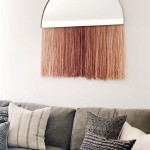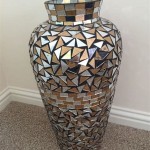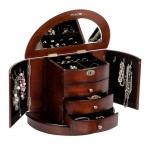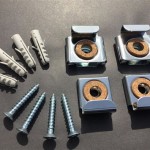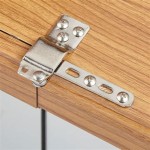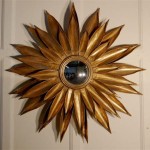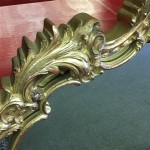How to Make Glass into a Mirror with Paint
Creating a mirrored surface on glass using paint offers a cost-effective and customizable alternative to traditional mirrors. This process utilizes specialized reflective paints to achieve a mirror-like finish. While the resulting reflection might not be as perfect as a traditional mirror, it offers sufficient reflectivity for various decorative and functional applications.
Essential Materials
Before embarking on this project, gather the following materials:
- Glass sheet (clean and dry)
- Mirror-effect spray paint
- Drop cloth or newspaper
- Gloves
- Mask
- Well-ventilated workspace
- Isopropyl alcohol (for cleaning)
- Lint-free cloth
Preparing the Glass Surface
Proper preparation is crucial for achieving a smooth and even reflective surface. Any dust, fingerprints, or residue can affect the paint's adhesion and create imperfections in the final result. Following these steps ensures a clean canvas for the mirror paint.
- Clean the glass thoroughly with isopropyl alcohol and a lint-free cloth. This removes any oils or residues that might hinder paint adhesion.
- Ensure the glass is completely dry before proceeding to the next step.
- Protect the surrounding area by placing a drop cloth or newspaper beneath the glass.
Applying the Mirror Paint
The application process requires careful and even spraying to achieve a uniform reflective coating. Rushing the process or applying too much paint in one go can lead to drips or unevenness. Patience and attention to detail are key to achieving a satisfactory mirror-like effect.
- Wear gloves and a mask to protect yourself from fumes and overspray.
- Shake the mirror-effect spray paint can vigorously for the recommended time indicated on the label. This ensures proper mixing of the reflective particles within the paint.
- Hold the can approximately 10-12 inches from the glass surface and spray in thin, even coats. Avoid holding the can too close, as this can cause the paint to pool and drip.
- Allow each coat to dry completely before applying the next. Refer to the paint manufacturer's instructions for drying times.
- Apply multiple thin coats rather than one thick coat. This builds up the reflective layer gradually and prevents runs and drips.
Drying and Curing
Adequate drying and curing time are essential for the paint to achieve its full reflective potential and durability. Disturbing the painted surface before it is fully cured can compromise the finish and reduce reflectivity.
- Allow the final coat to dry thoroughly in a dust-free environment. Avoid touching the surface during the drying process.
- Refer to the paint manufacturer's instructions for the recommended curing time. This is the period required for the paint to fully harden and reach its maximum reflectivity.
- Avoid exposing the newly mirrored surface to excessive moisture or heat during the curing process.
Tips for Best Results
Achieving a high-quality mirrored finish with paint requires attention to detail and adherence to best practices. These tips will help optimize the reflectivity and overall appearance of the finished product.
- Use high-quality mirror-effect spray paint specifically designed for this purpose.
- Work in a well-ventilated area to avoid inhaling paint fumes.
- Apply multiple thin coats for a smooth, even finish.
- Avoid touching the painted surface until it is fully cured.
- Experiment on a small piece of glass before applying the paint to the main project.
- For a more opaque and reflective finish, apply a black backing paint to the back of the glass before applying the mirror paint.
Troubleshooting Common Issues
Occasionally, challenges may arise during the process. Understanding potential issues and their solutions can help ensure a successful outcome.
Uneven Coating:
This can be caused by inconsistent spraying or not allowing each coat to dry properly. Sand lightly and reapply thin coats.Drips:
Drips occur when too much paint is applied in one area. Allow the paint to dry completely, then gently sand down the drips and reapply a thin coat.Poor Reflectivity:
This can be due to low-quality paint, insufficient coats, or an unclean glass surface. Ensure proper surface preparation and use a high-quality mirror paint, applying multiple thin coats.
Applications of Mirror Paint on Glass
A mirrored glass surface created with paint offers versatility for various applications, allowing for creative and practical uses in different settings.
Decorative Accents:
Mirrored glass can be used to create decorative wall art, framed mirrors, or embellishments for furniture.DIY Projects:
This technique is ideal for crafting custom mirrors for specific sizes or shapes not readily available commercially.Upcycling:
Old window panes or glass containers can be transformed into attractive mirrored pieces.Visual Illusions:
Strategically placed mirrored surfaces can create the illusion of more space in smaller rooms.

How To Make A Mirror With Pictures Wikihow

How To Make A Mirror With Pictures Wikihow

How To Quickly Turn Glass Mirror In 4 Steps Spray Paint Home Decor Ideas

Window Pane Mirror With Faux Antique Mercury Glass

Diy Window Transformation Create A Stunning Wall Hanging With Mirror Spray Paint

How To Turn A Thrifted Picture Frame Into Mirror Sweet Southern Oaks

How To Make A Mirror With Pictures Wikihow

Beautiful Easy Faux Mercury Glass Diy Mirror Tutorial This Life

How To Make A Faux Mercury Glass Mirror Tidy Mo

6 Oz Looking Glass Mirror Like Spray Paint Set Of Com


